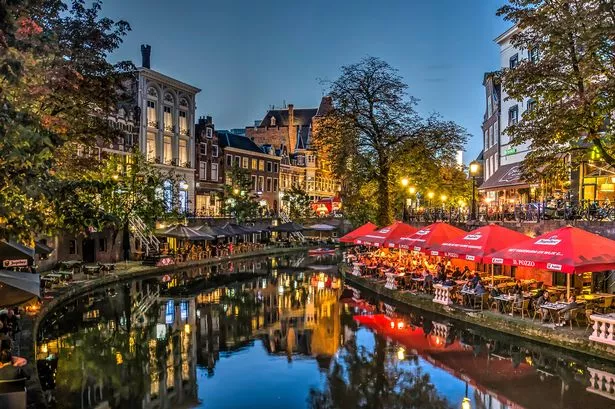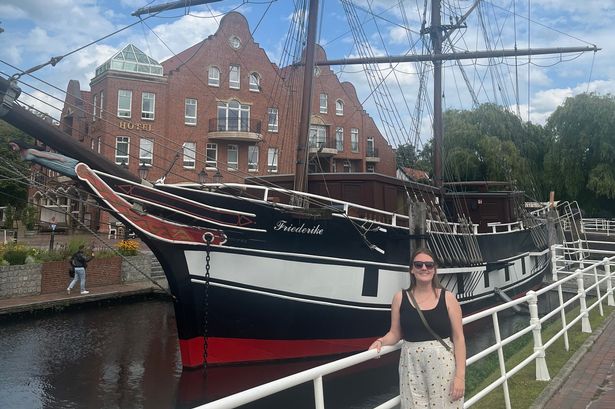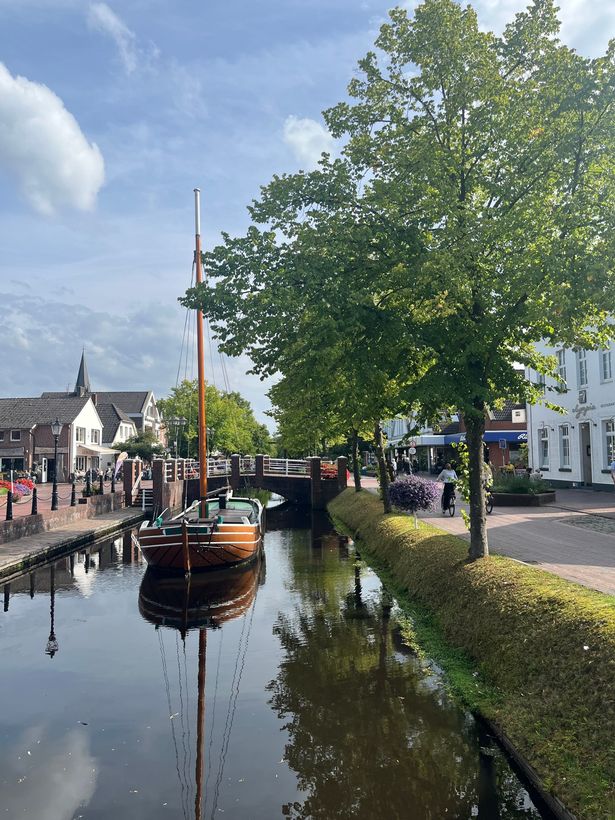The Dutch capital has started to say ‘nee dank je’ to British holidaymakers, but Utrecht is a city that’s just as good for a night out and is just as easy to get to
The Netherlands’ fourth city, Utrecht, has emerged as a must-visit destination and an ideal spot for a night out.
In recent years, Amsterdam has started to say ‘no thank you’ to British holidaymakers, along with tourists from other countries.
Fed up with its labyrinthine streets being congested by non-clog-wearing visitors, Amsterdam’s authorities have begun cracking down on unruly tourists.
Despite being home to only about 800,000 people, the Dutch capital attracts up to 20 million tourists a year. In response, it has banned alcohol-fuelled tours, prohibited cannabis in the Red Light District, and initiated a digital “stay away” campaign targeting young British men.
For those who’ve received the message loud and clear but still crave a stroopwafel and a taste of Dutch nightlife, Utrecht is the place to be.
READ MORE: Island 2 hours from UK that banned cars is one of ‘Europe’s most underrated’READ MORE: The charming ‘abandoned’ village with car ban that’s been brought back to life
Located right in the heart of the country, this city of 400,000 has been named one of Lonely Planet’s Best in Travel destinations for 2026, reports the Express. It’s easy to understand why Utrecht made the list for 2025, given its central location and the fascinating layout of its waterways.
“Easily accessible from Amsterdam by train, Utrecht is a brilliant destination for a weekend break. You’ve got a compact medieval centre, gabled houses that belong in a Vermeer painting and a bounty of bookshops, restaurants and museums to dig into,” says Lonely Planet.
“One of the most charming aspects of Utrecht is its canals. Canals are a common sight in the Netherlands, but Utrecht’s stand out due to their two-tier design, creating an almost subterranean world beneath the bustling streets above. While bikes clatter over the cobblestones at street level, descend the stone steps to tranquil walkways at water level, flanked by trees and 13th-century vaulted cellars.”
Utrecht is steeped in history, with the iconic Domtoren, a 14th-century bell tower, standing tall opposite the Gothic Cathedral of St. Martin in the central Domplein square.
The city also pays homage to its most famous offspring, Miffy. The creator of the cartoon rabbit, Dick Bruna, was born and died in the city, which now boasts the Miffy Museum, Miffy Square, and a special Miffy walk that allows pedestrians to discover more about the globally renowned character.
While this side of the city is delightful and family-friendly, those seeking an alternative to Amsterdam are likely after something a bit more raucous. Fortunately, Utrecht has a thriving nightlife scene that’s as edgy and European as you’d expect.
The area around Nijverheidsweg, west of Juliana Park and behind the Zuilen train station, is Utrecht’s newest party hotspot.
A number of entrepreneurs have launched nightlife venues in the area, also known as Werkspoorkwartier, named after a former train equipment factory that once stood there.
DUB magazine reveals how entrepreneurs have cleverly utilised the industrial charm of the buildings, with Club WAS offering a unique dancing experience in the former washing rooms of the Werkspoor Cathedral, where the old bathroom tiles and faucets are still visible.
The creative hub De Nijverheid offers a festival-like atmosphere with an art studio, creative spaces, a café, and a mini museum, ensuring there’s always something new to discover. The newly opened nightclub Kabul à GoGo also capitalises on its raw warehouse setting, boasting high ceilings and oriental rugs adorning the walls.
Student Lennart, 22, shared his fondness for the area with the publication, stating: “When I feel like a spontaneous night out or singing along to some music, the city centre is more accessible, it’s close by. You just show your ID and you’re in. But the Werkspoor area is much more fun than the pubs in the centre. It feels like going to a festival.”
Just like Amsterdam and Rotterdam, Utrecht is easily accessible from the UK, being only around 30 minutes away from Schiphol Airport, with connections approximately every 15 minutes. Utrecht Central Station is the busiest in the Netherlands, providing easy links to the rest of the country and Europe.
Rough Guides suggests that the best way to explore Utrecht is by hiring a bike, with boating the historic canals coming a close second. You can even combine the two with a pedalo and tour the waterways that encircle the city centre.
Lonely Planet’s Best in Travel 2026 – The Full Rundown
- Barbados
- Botswana
- British Columbia, Canada
- Cádiz, Spain
- Cartagena, Colombia
- Finland
- Ikara-Flinders Ranges & Outback, South Australia
- Jaffna, Sri Lanka
- Jeju-do, South Korea
- Liberdade, São Paulo, Brazil
- Maine, USA
- Mexico City, Mexico
- North Island, New Zealand/Aotearoa
- Peru
- Phuket, Thailand
- Quetzaltenango (Xela), Guatemala
- Quy Nhon, Vietnam
- Réunion
- Sardinia, Italy
- Siem Reap, Cambodia
- Solomon Islands
- Theodore Roosevelt National Park, USA
- Tipperary, Ireland
- Tunisia
- Utrecht, Netherlands






